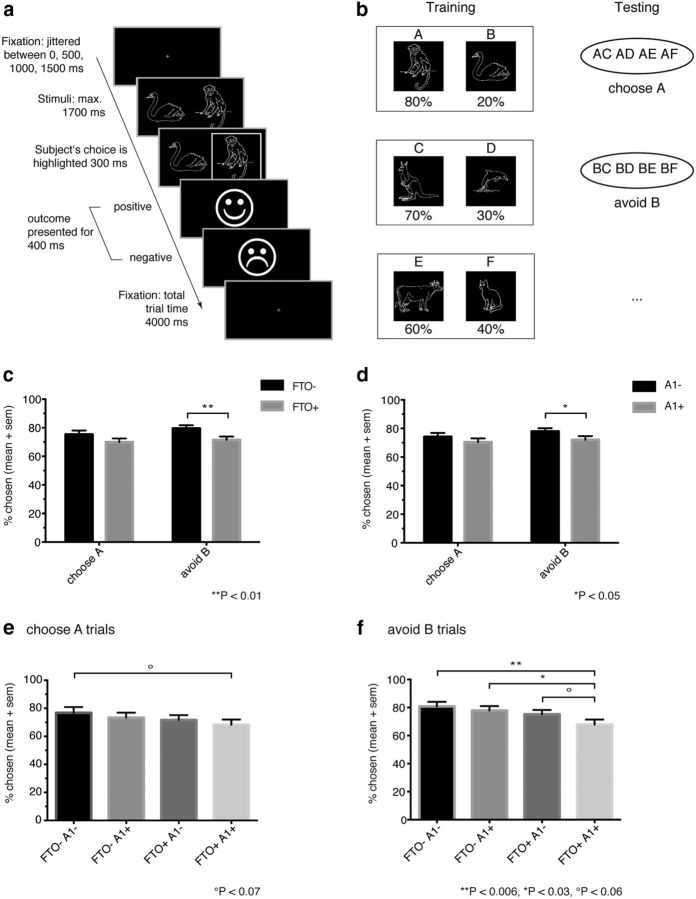Figure 1.
Probabilistic selection task (a, b) and behavioral results (c–f). a, Schematic task sequence, event order, and durations within a trial. Following selection of one of the two stimuli, the choice was visualized by a white frame. This was immediately followed by positive or negative feedback, according to the task schedule. b, Pairs of stimuli associated with different reward probabilities (percentage positive feedback). In the subsequent test phase, new combinations of the stimuli are presented to assess participants' performance on learning more from negative feedbacks or from positive feedbacks. Trials were identical to those from the learning phase, with the exception that no outcome was presented. Results of the behavioral post-test. c, Choosing the better option A and avoiding the worse option B differs between the FTO groups; correct choices during “avoid B” trials are significantly reduced in the FTO+ group, but there is no significant reduction in “choose A” trials. d, Behavior also differs between groups defined by ANKK1 genotype: choose A trials did not significantly differ between A1− and A1+ individuals, whereas correct choices during “avoid B” trials were significantly reduced in A1+ individuals. e, Combined FTO and ANKK1 genotypes do not show statistically significant differences on “choose A” trials, but a trend toward a reduction of correct choices on these trials between FTO−A1− and FTO+A1+ carriers. f, Reduction of correct choices during “avoid B” trials in a gene dosage-dependent manner; choices decreased in the presence of either the FTO+ or A1+ allele, and carriers of the combination of both risk alleles performed significantly worse than noncarriers. Values are mean ± SEM.

